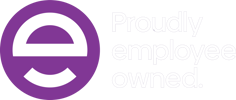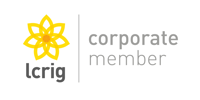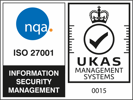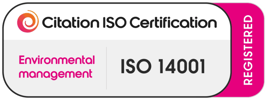The technological boom of the late 80s early 90s probably left most people imagining a future of either time travelling cars and hoverboards or an artificial intelligence triggered nuclear holocaust. The former references a future from 2015 and the later 2029 from successful films, Back To The Future Part 2 and The Terminator respectively. Now when we imagine a future and the impact of technology, it’s more about achieving Net Zero by 2050. To most, 2050 probably seems like it’s in the distant future. It’s not.
As a nation, we are working towards minimising our carbon footprint with climate emergencies being declared and many organisations aiming to achieve Net Zero by 2030, we need to look across all areas to identify all possible improvements, no matter how small. From an industry perspective, it is cited that the infrastructure sector contributes to almost one-sixth of total UK emissions, making it even more critical to analyse operations and make progress within the street and road works space.
In addition to identifying more environmentally friendly materials and sustainable energy sources for machinery from an operational perspective, we can also look in to how Symology’s Aurora solution can contribute to reducing carbon emissions.
Cloud hosted using Microsoft Azure
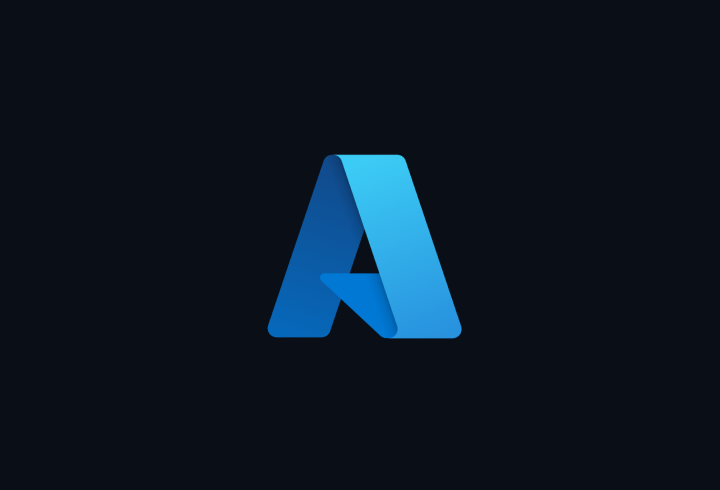
First and foremost, looking at the deployment of the solution, locally hosted installations are becoming a thing of the past. In the last ten years, organisations making the switch to hosted services has significantly increased and Aurora takes this to the next level. Hosted on Microsoft Azure, as a cloud implementation, Aurora benefits from massive efficiency through combined carbon reduction as part of Microsoft’s infrastructure. Making this transition alone can deliver up to a staggering 97.27% saving in carbon emissions, based on an average sized Symology customers on-premise service.
Away from the deployment, considerable efforts have been made to provide a solution which delivers not only operational efficiencies, but also environmental efficiencies contributing to the Net Zero effort surrounding all our customers.
With the introduction of new infrastructure to move towards a decarbonised nation, it must be acknowledged that the street and road works sector is going to see a huge increase in work volumes, in order to install the apparatus which is required.
Heat pumps, electric vehicle charging points, speed limit reduction schemes all require works on the ground, providing vital infrastructure improvements for our future. With this increase in volume comes even more of a need to find more efficient ways of working.
Driving operational efficiencies and carbon reduction
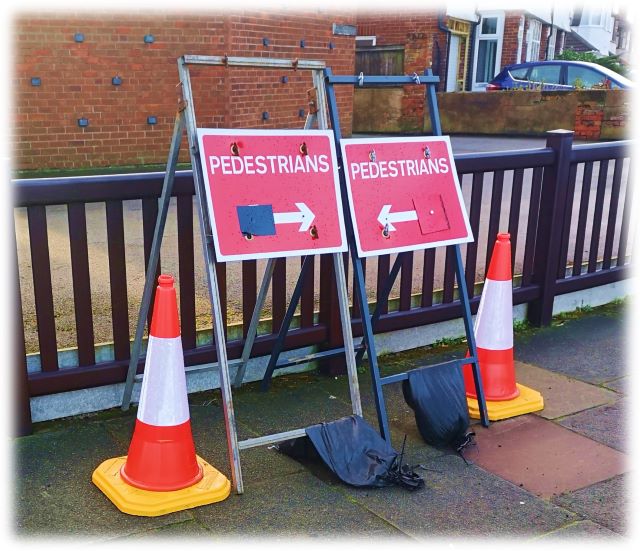
Coordination and collaboration are two words that are very familiar to the sector, yet an area where considerable improvements can be made. Aurora utilises data in an organisation’s own solution, sat alongside available Open Data from Street Manager, where applicable, within its conflict checking facility. Automated conflict checking provides significant benefits. Firstly, as we look to reduce traffic congestion at any time, minimising conflicting works within close proximity is one of the simplest ways and least impactful changes we can make. Aurora notifies users of any potential conflicts with both Authority and Utility works, displaying them spatially, which alongside local knowledge, can be used to coordinate works and reduce any possible delays. From a Works Promoter perspective, when raising works, having visibility of existing and proposed network occupancy can both minimise potential conflicts and present potential opportunities for collaboration. Whilst more sustainable materials and energy sources are sought, collaboration of work areas can reduce plant and materials used and the associated carbon emissions.
Reduce superfluous trips to site in addition to minimising defects and FPNs
Compliance
With the increased volume of works comes a larger number of works to manage and for which to ensure compliance. Compliance is an element for both parties; Utilities ensuring they are compliant with the requirements for their occupation of the highway, and Authorities ensuring the compliance of the works carried out both during operations and once the site has been returned to the travelling public.
Mobile Working
The Aurora app ensures that users have visibility of the required information on site, facilitated through both online and offline capabilities to cater for areas with minimal network connectivity.
When working out on site, we want to negate the need for printing of paper for two reasons; firstly as soon as you press print, the information can be out of date, and secondly, reducing the amount of paper printed contributes to keeping forests standing. A small change to the way information is viewed on site can be impactful on the environment.
From a Works Promoter perspective, once we are in a position to begin the works, we require key information on site, such as the works details, permit status and conditions, any associated special designations alongside any traffic management plans.
Reducing Defects and Fixed Penalty Notices
All of this information is available to a user via the Aurora app, without the need for paper. If we need to carry out a site audit, again, no need for paper, a user-definable assessment list can be presented on-site for completion. Should we wish to carry out Works Promoter self-inspections to drive high reinstatement quality and site compliance, standard inspection types available on the app can be recorded complete with photographic evidence. Once complete, these are sent immediately back to Aurora and thus the office. This not only provides real-time information but there’s not a sheet of paper in sight.
For Authorities ensuring compliance of the works occupying their network, the Aurora app presents remote operatives with works details, permit status and conditions, enabling the required checks and inspections to be completed. Access to previous inspection results and photographic evidence on the app from site provide key historic information at operative’s fingertips. These facilities not only make for efficient working operations, but also minimise the need for trips back and forth to the depot to receive updated information.
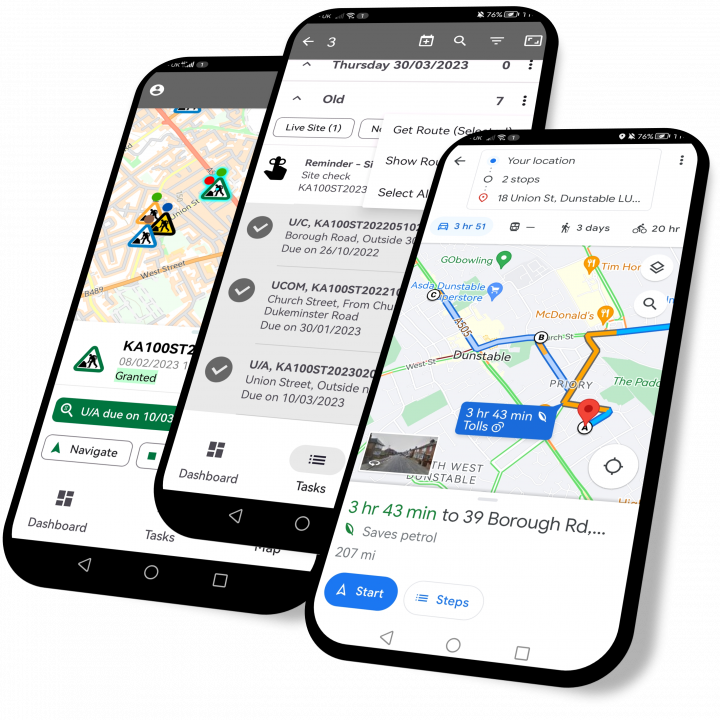
Whether you’re an Authority carrying out statutory inspections or a Utility self-inspecting, within the Aurora app, all due inspections are accessible. Statutory inspections are sampled via the appropriate method and are presented to the operative alongside manually prompted inspections.
For determining the most efficient order of inspections, remote operatives have a choice;
- Use local knowledge to manually order a task list, alongside the use of the map and GPS to select the closest due inspection or works to their current location;
- Use route optimising tools to present a list of activities and inspections in an optimised order.
For the first option, viewing due inspections and jobs on a map, alongside proposed and in progress works, combined with the GPS location, gives visibility of the nearest due activities to an operative’s current location. This avoids unnecessary journeys by minimising the amount of travel to the next operation.
Aurora’s route optimisation tools optimise the route to a defined list of activities and inspections. Using Google Maps to display the optimised route, users benefit from inbuilt tools such as selecting the fuel-efficient option to navigate via the most fuel/energy-efficient route, lowering the vehicle’s fuel/energy usage and CO2 emissions. Minimising the distance travelled goes hand in hand with minimising carbon emissions.
Minimising wasted trips with a holistic view
Reducing superfluous trips to site is a key area in promoting efficient operations, which can be brought about through the visibility of data. Aurora is designed to present a holistic view of a network, showing where activities are taking place, when and the impact they will have. Having a holistic view of a network, showing where planned activities exist, minimises the risk of a new activity conflicting, resulting in a wasted site visit. Let’s consider a real-life example; If a Utility has a road closure in place to carry out an emergency repair, and a highways inspector has a safety inspection due on that same street in the same timeframe, the inspector could turn up on site to complete the inspection only to find that they don’t have access to the street owing to the closure. This presents both operational inefficiencies but also has an environmental impact through an unnecessary journey.
Aiding a ‘Right First Time’ approach
Visibility of both operations in Aurora enables the inspector to see that the street is closed and avoid visiting on that occasion, thus minimising wasted trips to site. Furthermore, a “right first time” approach has been a goal for many years with the aim of reducing network occupancy. Whilst minimising network occupancy for the travelling public is important, a ’right first time’ approach has a direct impact on the environment. Having access to all works information, photographs, required materials, assets, contributes to minimising excess trips to site by decreasing the number of interim reinstatements or defects, resulting in additional phases or remedial works.
Maintaining an asset inventory
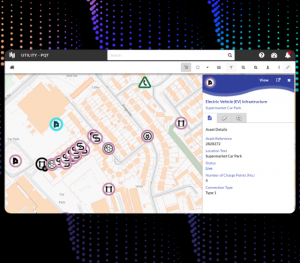 Once we’ve completed the works to install this necessary infrastructure, utilising Aurora’s facilities for energy efficient operations, we need to retain a record of these newly installed assets to manage and maintain them. Aurora includes standard asset types, such as electric vehicle charging points, which are reportable and displayed spatially. With the assets recorded in Aurora, scheduling inspections and maintenance become part of the standard asset management processes in addition to identifying their location when planning other works and schemes.
Once we’ve completed the works to install this necessary infrastructure, utilising Aurora’s facilities for energy efficient operations, we need to retain a record of these newly installed assets to manage and maintain them. Aurora includes standard asset types, such as electric vehicle charging points, which are reportable and displayed spatially. With the assets recorded in Aurora, scheduling inspections and maintenance become part of the standard asset management processes in addition to identifying their location when planning other works and schemes.
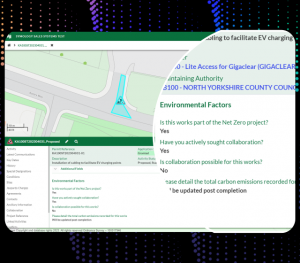 Having data to hand in addition to easy access to information presents not only operational efficiencies, but significantly diminishes the requirement for printing or writing notes on paper. Aurora’s browser-based implementation enables the use of browser features such as opening multiple tabs to compare details without the need to jot it down. In addition, exporting of data, reporting capabilities with emailing functionality all contribute to reducing unnecessary printing aiding a paperless operation. This easy access to information also includes the ability to record user-definable details based on local operations. For example, as we’ve discussed, the required infrastructure to support our decarbonisation aspirations for the future will equate to increased work volumes. These works differ from asset maintenance and ensuring customer supply and as such, we might wish to record this against the works, so that we can report on the amount of works contributing to the Net Zero effort. Against our highway maintenance jobs, we might wish to record the amount of emissions for each job so that we can analyse the results with the intention of making our operations more energy efficient. These two examples, and many more, for monitoring and reporting on our contribution towards the global effort can easily be accommodated by Aurora.
Having data to hand in addition to easy access to information presents not only operational efficiencies, but significantly diminishes the requirement for printing or writing notes on paper. Aurora’s browser-based implementation enables the use of browser features such as opening multiple tabs to compare details without the need to jot it down. In addition, exporting of data, reporting capabilities with emailing functionality all contribute to reducing unnecessary printing aiding a paperless operation. This easy access to information also includes the ability to record user-definable details based on local operations. For example, as we’ve discussed, the required infrastructure to support our decarbonisation aspirations for the future will equate to increased work volumes. These works differ from asset maintenance and ensuring customer supply and as such, we might wish to record this against the works, so that we can report on the amount of works contributing to the Net Zero effort. Against our highway maintenance jobs, we might wish to record the amount of emissions for each job so that we can analyse the results with the intention of making our operations more energy efficient. These two examples, and many more, for monitoring and reporting on our contribution towards the global effort can easily be accommodated by Aurora.
Aurora is not only the future, it is the present. Hoverboards will come next.
Whether you’re an Authority or Utility, carrying out street works or highways asset management, working in Scotland, Northern Ireland, Wales or England, whether your Net Zero target is 2050 or sooner, Aurora’s design lends itself to organisations wishing to make operational improvements in order to reduce their carbon footprint and contribute to the national decarbonisation effort.
UPDATE March 2025: Our Carbon Reduction Plan is now available.


